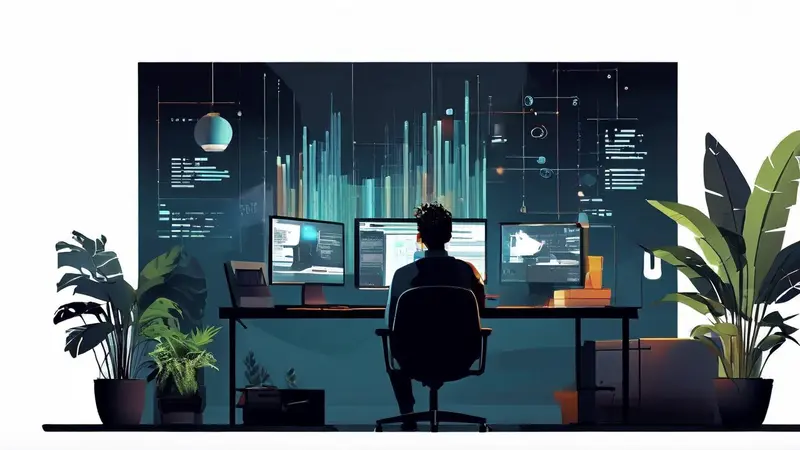
OA办公系统开发的过程包括需求分析、系统设计、编码实现、系统测试、系统部署和后续维护。在开发过程中,需要考虑的关键因素包括用户体验、功能完整性、数据安全性、系统稳定性、扩展性及维护性。 对于OA办公系统的开发,首先应该了解企业的办公流程和需求,然后根据需求设计系统架构和功能模块,编写代码实现功能,测试系统的稳定性和安全性,并在企业环境中部署系统,最后对系统进行持续的维护和优化,以适应企业的变化和发展。
一、需求分析
需求分析是OA办公系统开发的第一步,也是非常重要的一步。需求分析的主要任务是理解并明确企业的办公流程和需求。开发者需要与企业管理层、IT部门和一线员工进行深入的交流,了解企业的组织结构、业务流程、数据管理和报告需求,以及员工的操作习惯等。在明确了需求后,开发者需要整理和归纳需求,形成需求分析报告。
二、系统设计
系统设计是根据需求分析结果,设计OA办公系统的架构和功能模块。在系统设计阶段,开发者需要考虑系统的用户体验、功能完整性、数据安全性、系统稳定性、扩展性和维护性。用户体验是系统设计的重要考虑因素,包括界面设计、操作流程、系统反馈等。功能完整性是指系统需要实现所有的业务需求,包括数据管理、流程审批、报告生成等。数据安全性是指系统需要保证数据的安全,防止数据丢失和泄露。系统稳定性是指系统需要在各种环境和条件下稳定运行。扩展性和维护性是指系统需要易于扩展和维护,以适应企业的变化和发展。
三、编码实现
编码实现是根据系统设计,编写代码实现OA办公系统的功能。编码实现的关键是质量和效率。质量是指代码的质量,包括代码的可读性、可维护性和可重用性。效率是指开发的效率,包括开发速度和代码性能。在编码实现阶段,开发者需要遵循编码规范和开发流程,使用合适的开发工具和技术,进行有效的代码复用和优化,以提高质量和效率。
四、系统测试
系统测试是检查OA办公系统的功能、性能和安全性。系统测试的目标是找出并修复系统的缺陷,保证系统的质量。在系统测试阶段,开发者需要设计和执行各种测试用例,包括功能测试、性能测试、安全测试、兼容性测试等。开发者还需要对测试结果进行分析和评估,根据评估结果进行缺陷修复和系统优化。
五、系统部署
系统部署是将OA办公系统部署到企业环境中,供企业员工使用。系统部署的关键是平稳过渡和用户培训。平稳过渡是指在系统部署过程中,需要保证企业的正常运行,避免影响企业的业务。用户培训是指需要对企业员工进行系统操作的培训,帮助他们熟练使用系统。
六、后续维护
后续维护是对OA办公系统进行持续的维护和优化。后续维护的目标是提高系统的满意度和使用效率。在后续维护阶段,开发者需要对系统进行定期的检查和升级,对系统出现的问题进行及时的修复,对用户的反馈进行及时的响应,根据企业的变化和发展,对系统进行必要的修改和优化。
相关问答FAQs:
FAQs about OA Office System Development
Q: What is an OA office system?
A: An OA office system is a software solution that helps streamline and automate various office processes such as document management, task management, employee attendance, and collaboration among team members.
Q: What are the benefits of developing an OA office system?
A: Developing an OA office system can bring several benefits, including increased productivity, improved efficiency in office operations, enhanced communication and collaboration among employees, centralized document management, and better decision-making through real-time data analysis.
Q: How can an OA office system improve productivity in the workplace?
A: An OA office system can improve productivity by automating repetitive tasks, reducing paperwork, providing easy access to information and resources, facilitating seamless communication and collaboration among employees, and enabling efficient workflow management.
Q: Can an OA office system be customized according to specific business needs?
A: Yes, an OA office system can be customized to meet the specific requirements of a business. Customization can include adding modules or features, integrating with existing systems, and adapting the system to the unique workflows and processes of the organization.
Q: Is it possible to integrate an OA office system with other business applications?
A: Yes, an OA office system can be integrated with other business applications such as CRM systems, ERP systems, HR systems, and accounting software. Integration allows for seamless data exchange, eliminates duplicate data entry, and provides a holistic view of the organization's operations.
Q: How long does it take to develop an OA office system?
A: The development time for an OA office system depends on the complexity of the requirements and the size of the organization. Generally, it can take several weeks to several months to develop and deploy a fully functional OA office system.
Q: Is it necessary to have technical expertise to use an OA office system?
A: While some technical knowledge may be required for system administrators or developers, most OA office systems are designed to be user-friendly and intuitive. TrAIning and support are usually provided to help users become familiar with the system and its functionalities.
Q: Can an OA office system be accessed remotely?
A: Yes, most modern OA office systems are web-based or have mobile applications, allowing users to access the system remotely from anywhere with an internet connection. This enables employees to work from home or on the go, increasing flexibility and productivity.





























